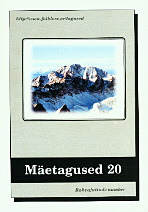Laulutraditsioon ja kodupaik
Singing tradition and home
Author(s): Aivar JürgensonSubject(s): Customs / Folklore
Published by: Eesti Kirjandusmuuseum
Summary/Abstract: The songs of Siberian Estonians are either those they brought from the fatherland, created on the spot or adapted from local people, mainly Russians. Songs that originate from the fatherland are mainly patriotic songs that were first used to maintain the Estonian-related identity but were later modified to help determine the connection with their home in Siberia. In the habitats of the descendants of deported Estonians (e.g. the village of Upper Suetuk) relatively more prison songs are sung than in the villages of emigrants. Some songs are partly in Russian, though such songs have also been recorded in Estonia. Some Russian songs sung were in Estonian (e.g. the "Pradyaaga song") are considered Estonian by Siberian Estonians. In addition to supplementing the repertoire, Russian songs also influence the style of performing. Thus they sing in a "tinnier" and higher voice, duets are common, girls walk on the village street singing in a loud voice. There are relatively less choir songs in Siberia, though there has been and is both an active choir and trumpet band and settlement song festivals have been held.
Journal: Mäetagused. Hüperajakiri
- Issue Year: 2003
- Issue No: 20
- Page Range: 130-145
- Page Count: 16
- Language: Estonian

